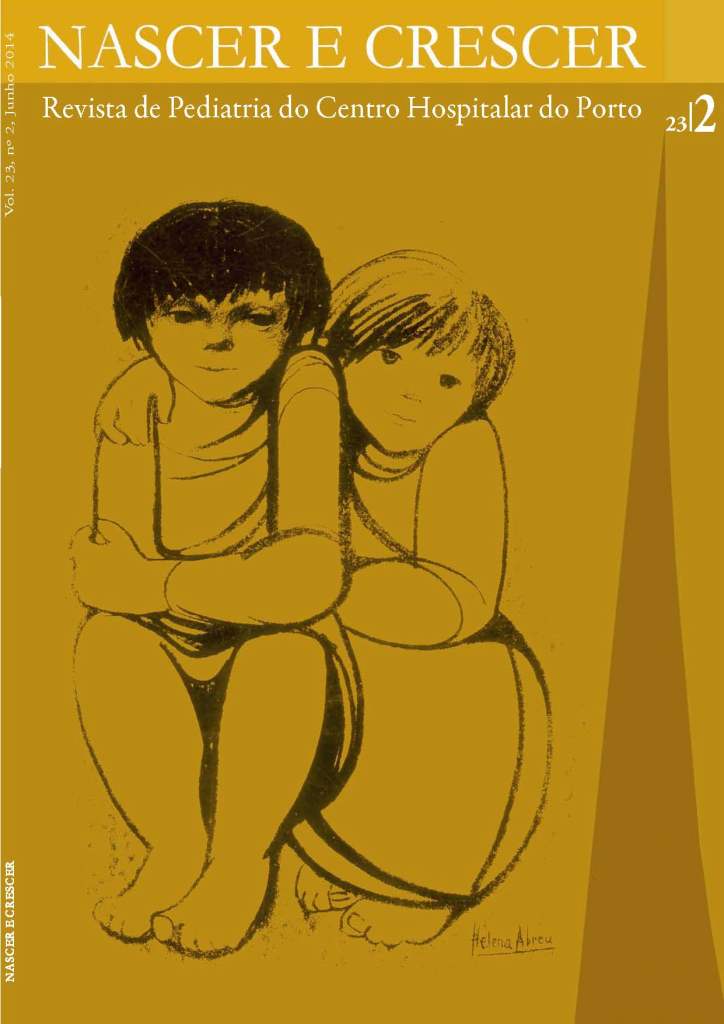Mother-to-child transmission of human immunodeficiency virus type 1 infection
DOI:
https://doi.org/10.25753/BirthGrowthMJ.v23.i2.8599Keywords:
Antiretroviral treatment, HIV infection, mother-to-child transmission, preventionAbstract
Introduction: Human Immunodeficiency Virus type 1 (HIV1) infection in children is almost related to mother-to-child transmission (MTCT). Without prophylaxis transmission rates are 15-25%. With appropriate prophylaxis <2% rates are achieved.
Objective: Evaluate the MTCT of HIV infection in a maternity.
Materials and Methods: Retrospective study, with review of clinical files of children whose mothers have HIV1 infection, born at Júlio Dinis Maternity from January 2006 to December 2011. Not infected was defi ned if 2 virologic tests were negative(one after 4 months of age) with no clinical signs of infection. Statistical analysis was performed with Epi-Info ® v.3.5.1 (Fisher test, p <0.05).
Results: Seventy seven children were born from HIV1 infected mothers, 45 (58.4%) males and 15 (19.5%) preterm infants. Diagnosis of maternal infection during pregnancy occurred in 24 (31.6%) and one at childbirth (1.3%). Seven (9.2%) hadn’t had antiretroviral therapy (ART) during pregnancy and 9 (12.3%) had viral load> 1,000 copies at childbirth. Normal delivery occurred in 4 (5.2%) and 10 (13%) had rupture of membranes (RM) # 4h. None was breastfed. All received prophylaxis in the neonatal period; 17 (22.1%) with 3 drugs, associated with absence of ART in pregnancy and at childbirth, maternal viral load> 1,000 copies,RM # 4h, spontaneous RM and prematurity. One newborn (1.3%) died. No child became infected. Almost a third (35.5%) had hematological toxicity and 23 (30.3%) had hepatic toxicity, both reversible.
Conclusion: In the population studied no MTCT of HIV1 infection occurred, despite the presence of factors that increase the risk of transmission in a high percentage of cases.
Downloads
References
VIH/SIDA CN para a I. Recomendações Portuguesas para o Tratamento da Infecção VIH / SIDA. 2011; Disponivel em :http://www.sida.pt
Cavarelli M, Scarlatti G. Human immunodefi ciency virus type 1 mother-to-child transmission and prevention: successes and controversies. J Internal Med 2011;270:561–79
Fernández-Ibieta M, Ramos Amador JT, Guillén Martín S, González-Tomé Ma, Navarro Gómez M, Iglesias González- -Nicolás E, et al. ¿Por qué se infectan aún niños con el virus de la inmunodeficiencia humana en España? Anales de Pediatría 2007;67:109–15.
Pediatria SPDE. Consensos e Recomendações - Protocolo de prevenção da transmissão vertical do vírus da imunodeficiência humana ( VIH )* Secção de Neonatologia da Sociedade Portuguesa de Pediatria. Acta Pediátrica Portuguesa 2008;39:79–83.
Prieto LM, González-Tomé M-I, Muñoz E, Fernández-Ibieta M, Soto B, Del Rosal T, et al. Low rates of mother-to-child transmission of HIV-1 and risk factors for infection in Spain: 2000-2007. Pediatr Infect Dis J 2012;31:1053–8.
Noguera Julian a, De José MI. Recommendations issued by the Spanish Society of Pediatric Infectious Diseases for the follow-up of the child exposed to the human immunodeficiency virus and to antiretroviral drugs during pregnancy and the neonatal period. Anales de pediatría (Barcelona) 2012;76:360.e1–9.
Haile-Selassie H, Townsend C, Tookey P. Use of neonatal post-exposure prophylaxis for prevention of mother-to-child HIV transmission in the UK and Ireland, 2001-2008. HIV medicine 2011;12(7):422–7.
Taylor G, Clayden P, Dhar J, Gandhi K, Gilleece Y, Harding K, et al. British HIV Association guidelines for the management of HIV infection in pregnant women 2012. HIV Medicine 2012;13:87–9.
Mnyani CN, McIntyre J a. Preventing mother-to-child transmission of HIV. BJOG : an international journal of obstetrics and gynaecology [Internet]. 2009;116 Suppl 71–6.
Coovadia H. Current issues in prevention of mother-to-child transmission of HIV-1. Current opinion in HIV and AIDS [Internet]. 2009;4:319–24.
Townsend CL, Cortina-Borja M, Peckham CS, De Ruiter A, Lyall H, Tookey P a. Low rates of mother-to-child transmission of HIV following effective pregnancy interventions in the United Kingdom and Ireland, 2000-2006. AIDS (London, England). 2008;22:973–81.
Cecchini D, Martinez M, Astarita V, Nieto C, Giesolauro R, Rodriguez C. Prevención de la transmisión vertical del VIH-1 en un hospital público de complejidad terciaria de Buenos Aires, Argentina. Rev Panam Salud Publica 2011;30:189–95.
Downloads
Published
How to Cite
Issue
Section
License
Copyright and Authors' Rights
All articles published in Nascer e Crescer - Birth and Growth Medical Journal are Open Access and comply with the requirements of funding agencies or academic institutions. For use by third parties, Nascer e Crescer - Birth and Growth Medical Journal adheres to the terms of the Creative Commons License "Attribution - Non-Commercial Use (CC-BY-NC)".
It is the author's responsibility to obtain permission to reproduce figures, tables, etc. from other publications.
Authors must submit a Conflict of Interest statement and an Authorship Form with the submission of the article. An e-mail will be sent to the corresponding author confirming receipt of the manuscript.
Authors are permitted to make their articles available in repositories at their home institutions, provided that they always indicate where the articles were published and adhere to the terms of the Creative Commons license.


